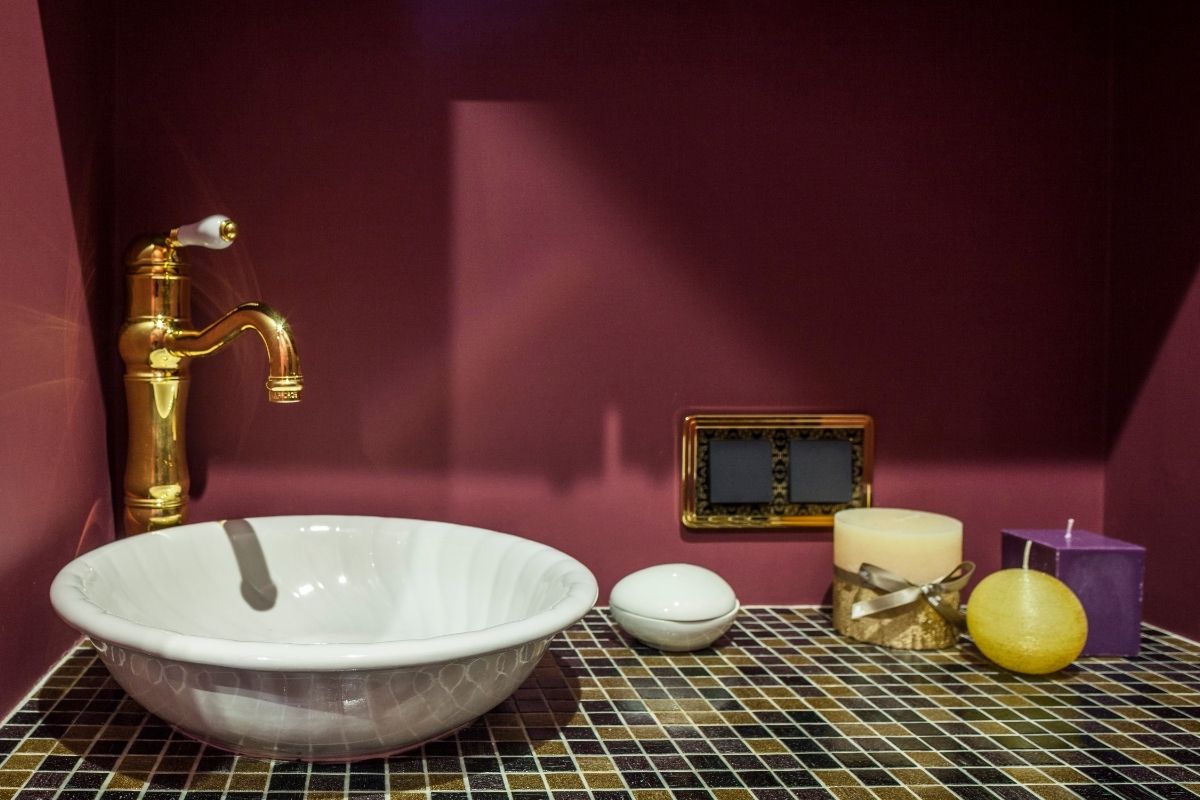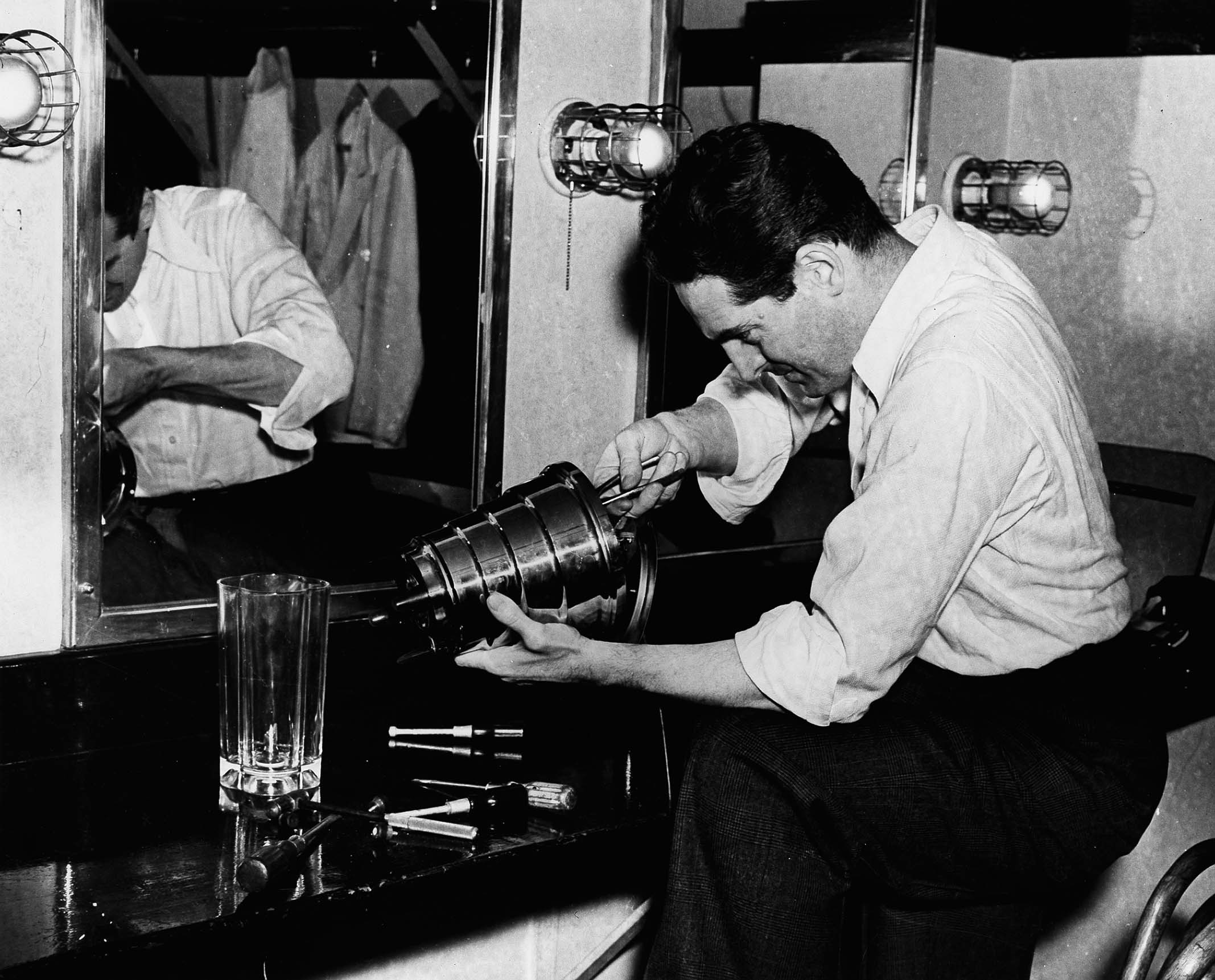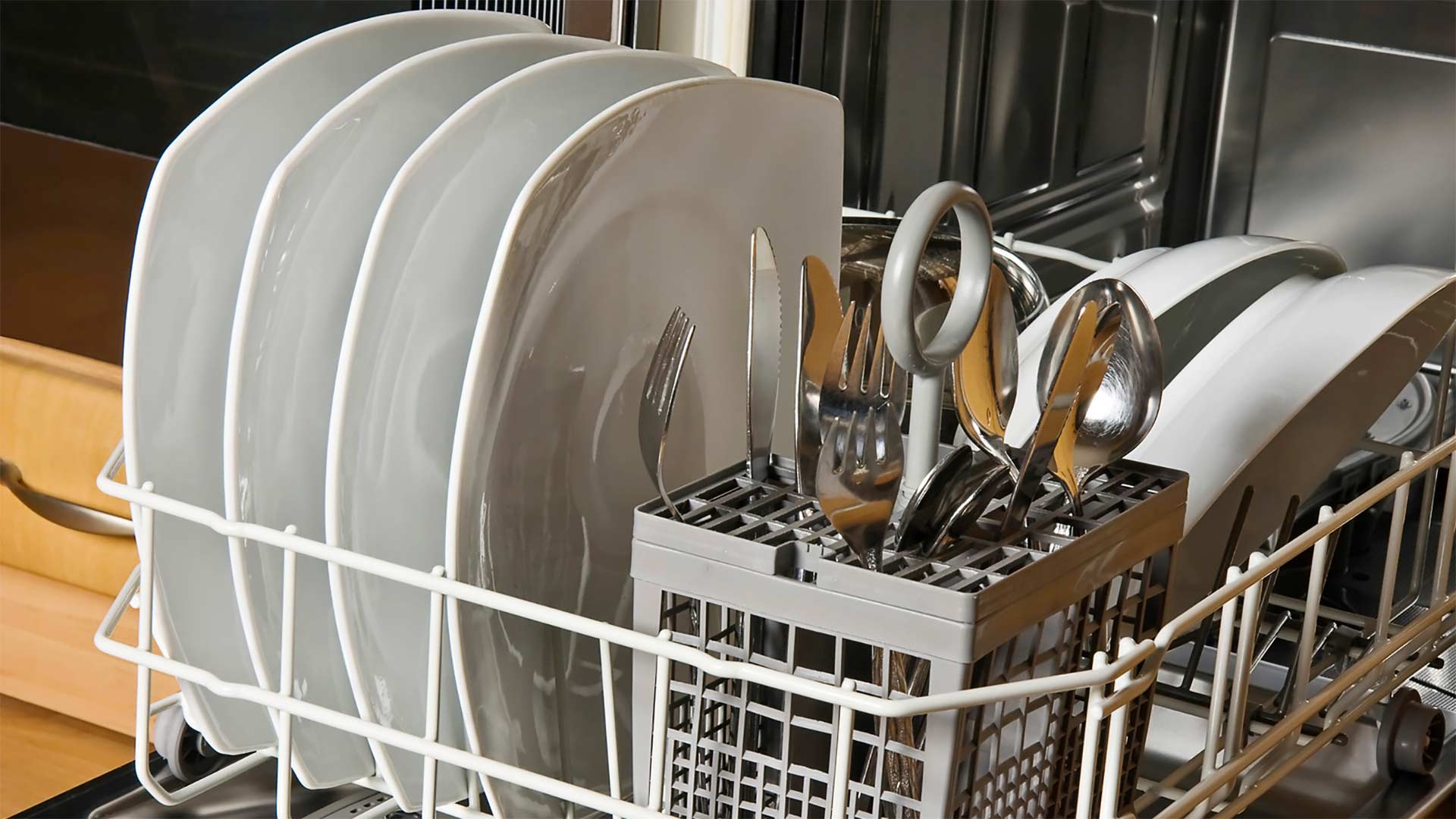

Articles
When Was The Sink Invented
Modified: February 22, 2024
Discover the history of the sink and learn when it was first invented. Read our informative articles on the fascinating origins of this household fixture.
(Many of the links in this article redirect to a specific reviewed product. Your purchase of these products through affiliate links helps to generate commission for Storables.com, at no extra cost. Learn more)
Introduction
In today’s modern world, we often take for granted the convenience and functionality of indoor plumbing. One of the essential fixtures in any modern bathroom or kitchen is the sink. The sink has become a fundamental part of our daily lives, used for various purposes, such as washing dishes, washing hands, and even grooming. But have you ever wondered when the sink was first invented and how it has evolved over time?
In this article, we will delve into the fascinating history of the sink and explore its origins and evolution throughout the centuries. From ancient civilizations to the technological advancements of today, we will discover the remarkable journey of this essential plumbing fixture.
By understanding the history of the sink, we can gain a deeper appreciation for the innovations and engineering that have shaped our modern-day plumbing systems. So, let’s embark on this journey through time and delve into the captivating story of the sink.
Key Takeaways:
- The sink has evolved from ancient civilizations to modern innovations, revolutionizing hygiene and sanitation practices while becoming an essential fixture in our daily lives.
- Advancements in plumbing technology have led to the development of modern sink inventions, promoting sustainability, water conservation, and seamless integration with living spaces.
Read more: When Was The Bathtub Invented
The History of Indoor Plumbing
Before the invention of indoor plumbing, our ancestors relied on various methods to dispose of waste and obtain clean water. Early civilizations, such as the Indus Valley Civilization and the ancient Egyptians, developed rudimentary plumbing systems to meet their basic needs.
However, it wasn’t until the Roman era that indoor plumbing truly began to take shape. The Romans were known for their remarkable engineering feats, including the construction of aqueducts that transported water from distant sources into cities. These aqueducts provided a reliable water supply, allowing for the development of public baths and rudimentary plumbing fixtures.
During the Renaissance period, advancements in plumbing technology brought about more sophisticated indoor plumbing systems. Wealthy households in Europe started to install complex networks of pipes and drains, complete with hand pumps and water closets. Nevertheless, the majority of people still relied on communal wells and outhouses for their water and waste disposal needs.
Fast forward to the Industrial Revolution, and we see significant improvements in plumbing technology. With the advent of cast iron and galvanized steel pipes, mass-produced fixtures, and water pressure systems, indoor plumbing became more accessible to the general population. The widespread adoption of indoor plumbing systems revolutionized hygiene practices and improved public health.
Today, indoor plumbing is a staple feature of every household and building. Plumbing systems have become more efficient, with innovations such as water-saving faucets, dual-flush toilets, and eco-friendly materials. The availability of hot water systems, garbage disposals, and water filtration systems has further enhanced the functionality and convenience of modern plumbing.
Understanding the history of indoor plumbing is crucial to appreciate the complex infrastructure and technology that allows us to enjoy the comforts of running water and proper sanitation. The evolution of indoor plumbing systems has not only improved our quality of life but also played a significant role in societal advancements.
Early Methods of Water Disposal
Before the invention of sophisticated plumbing systems, early civilizations had to rely on primitive methods of water disposal. These methods varied depending on the region and the available resources. Let’s take a closer look at some of the early methods of water disposal:
- Pit Toilets: One of the earliest forms of waste disposal was the use of pit toilets. These were simple structures built over pits dug in the ground. Waste would accumulate in the pit and eventually decompose over time. This method was commonly used in ancient civilizations like Mesopotamia and ancient Egypt.
- Open Sewers: In densely populated areas, open sewers were implemented to carry away waste. These were ditches or channels filled with water that served as drainage systems. Unfortunately, these open sewers often led to unsanitary conditions and the spread of diseases.
- Chamber Pots: In medieval Europe, chamber pots were commonly used in households. These were portable containers, usually made of clay or metal, used as a toilet. Once full, they would be emptied into designated areas, such as street gutters or communal pits.
- Greywater Disposal: In ancient civilizations, greywater, which includes wastewater from activities like bathing and laundry, was often reused or disposed of in nearby bodies of water. This practice helped conserve water resources and prevented the accumulation of stagnant water.
These early methods of water disposal had their limitations and often resulted in unhygienic conditions. It wasn’t until the development of more advanced plumbing systems that proper water disposal became a reality.
Next, we will explore the evolution of the sink and how it played a pivotal role in improving sanitation and hygiene.
The Evolution of the Sink
As indoor plumbing systems advanced, the need for a dedicated fixture for water supply and waste disposal became apparent. This led to the development and evolution of the sink. Let’s explore how the sink has evolved over time:
- Ancient Sinks: The earliest known sinks can be traced back to ancient civilizations like the Indus Valley Civilization and ancient Egypt. These sinks were typically made of stone or clay and consisted of a shallow basin or trough-like structure. They were primarily used for personal hygiene purposes, such as washing hands and face.
- The Roman Era and Aqueduct Systems: During the Roman era, advancements in plumbing technology, particularly the construction of aqueducts, allowed for more sophisticated water supply systems. With the availability of running water, sinks became more common in public baths and wealthy Roman households. These sinks were typically made of marble or stone and had intricate designs.
- The Renaissance and Innovations in Plumbing: The Renaissance period witnessed significant advancements in plumbing technology. Plumbing systems continued to improve, and more elaborate sinks were introduced. These sinks were often made of porcelain or copper and featured hand pumps for water supply. However, plumbing fixtures were still limited to affluent households.
- Modern Sink Inventions: In the 19th and 20th centuries, with the advent of mass production and industrialization, sinks became more accessible to the general population. Stainless steel became a popular material for sink manufacturing due to its durability and ease of cleaning. With modern plumbing systems, sinks became standard fixtures in every kitchen and bathroom, serving various purposes such as washing dishes, food preparation, and personal hygiene.
Today, sinks have evolved to meet the demands of modern living. They come in various styles, sizes, and materials to suit different design preferences and functional needs. Innovative features such as touchless faucets, integrated soap dispensers, and double-bowl configurations have further enhanced the functionality and convenience of sinks.
The evolution of the sink has been closely intertwined with the development of indoor plumbing systems. It has played a crucial role in improving sanitation, hygiene, and overall quality of life. The sink has become an essential fixture in our daily routines, and its evolution exemplifies the ingenuity and progress of plumbing technology.
Ancient Sinks
Ancient civilizations had a need for basic hygiene practices, which led to the development of rudimentary sinks. These early sinks were found in various ancient cultures and were made from a range of materials such as stone, clay, and metal.
In ancient Egypt, sinks were commonly found in homes and temples. These sinks were rectangular in shape, made of stone or clay, and often adorned with ornate carvings and hieroglyphics. They were used primarily for personal hygiene routines, such as washing hands, face, and feet. Some ancient Egyptian sinks even featured drainage systems that allowed water to flow into a separate receptacle.
The Indus Valley Civilization, one of the world’s oldest urban civilizations, also had early examples of sinks. In the ancient city of Mohenjo-Daro, archaeologists discovered houses equipped with carefully constructed drainage systems, which included stone or clay sinks. These sinks were connected to underground drains, indicating a basic understanding of water management.
In ancient Greece, the idea of personal hygiene and cleanliness was highly valued. Sinks, known as loutrophoroi, were widely used for ceremonial purposes such as cleansing before religious rituals or before marriage. These sinks were typically made of clay and had a cylindrical or rectangular shape.
Ancient Roman society took hygiene practices to another level with the development of more advanced plumbing systems. Public baths, which were an integral part of Roman culture, featured large communal sinks known as labra. These sinks were made from marble and were equipped with multiple faucets to accommodate several people at once. Romans also had individual household sinks made of various materials, including marble, stone, or bronze.
These ancient sinks were not only functional but also represented the cultural and technological advancements of their respective civilizations. They served as a testament to the importance placed on cleanliness and personal hygiene.
The use of sinks in ancient times laid the foundation for the evolution of plumbing and the modern-day sink that we are familiar with today.
The earliest known sinks date back to around 4000-3000 BCE in ancient civilizations such as the Indus Valley and Mesopotamia. These early sinks were made of stone and were used for washing and food preparation.
Read more: When Was Jenga Invented
The Roman Era and Aqueduct Systems
The Roman era was a turning point in the development of plumbing systems and the widespread use of sinks. The Romans were renowned for their engineering prowess, particularly in the construction of aqueducts that transported water from distant sources into cities.
The aqueduct systems implemented by the Romans allowed for a reliable supply of clean water, which was essential for public baths, fountains, and other communal amenities. With the availability of running water, Romans began to incorporate sinks into their daily lives on a larger scale.
Public baths, or thermae, were a prominent feature of Roman culture, and they played a significant role in promoting cleanliness and social interaction. These lavishly designed bath complexes featured a multitude of sinks for various purposes, such as washing hands, faces, and bodies.
The sinks in Roman public baths, known as labra, were typically made of marble and were designed to accommodate multiple users simultaneously. Rows of faucets were installed above the sinks, allowing individuals to access running water for hygiene and cleansing rituals. These sinks were often positioned along the walls of the bathhouses, creating a communal space for personal care.
Additionally, wealthy Roman households had their own private indoor plumbing systems that included sinks in various rooms, such as kitchens, bathrooms, and personal chambers. These sinks, also made of materials like marble or stone, were connected to the city’s water supply through a network of pipes. They facilitated daily tasks related to personal hygiene and household chores.
It is worth noting that the Romans also utilized more advanced drainage systems to dispose of wastewater. They developed underground sewer systems, known as cloacae, which efficiently directed wastewater away from inhabited areas and into nearby rivers or bodies of water, preventing contamination and the spread of diseases.
The Roman era became a significant milestone in the history of sinks and plumbing, thanks to the ingenious aqueduct systems and the widespread adoption of hygiene practices. The use of sinks in public baths and private homes not only improved sanitation but also served as a symbol of Roman engineering marvels and their commitment to a civilized way of life.
The Renaissance and Innovations in Plumbing
The Renaissance, a period of great cultural and intellectual flourishing in Europe, also witnessed significant advancements in plumbing technology. These innovations led to improvements in indoor plumbing systems and further developments in the design and functionality of sinks.
During this era, wealthy households in Europe began to invest in more sophisticated plumbing systems. Plumbing fixtures, including sinks, became more elaborate and ornate. The Renaissance saw a shift towards using materials such as porcelain, copper, and brass for sink construction, adding both functionality and aesthetic appeal to these fixtures.
Sinks during the Renaissance were often equipped with hand pumps for water supply. These pumps allowed individuals to draw water from a nearby source and use it in the sink for various purposes. The addition of hand pumps significantly improved the accessibility and convenience of using sinks, especially in homes where piped water systems were not yet widespread.
In addition to the advancements in sink design, the Renaissance also saw innovations in plumbing infrastructure. Water supply networks became more sophisticated, with the inclusion of cisterns, reservoirs, and gravity-fed systems. These developments improved water pressure and allowed for a more reliable and consistent supply of water to sinks and other plumbing fixtures.
Plumbing during the Renaissance was still primarily limited to wealthy households, with the majority of the population relying on communal wells and basic service facilities for their water and waste disposal needs. However, these advancements in plumbing and sink technology laid the foundation for future developments in the field.
The Renaissance period’s investment in plumbing infrastructure and innovations greatly contributed to the improvement of sanitation and hygiene practices. The availability of clean, running water in sinks promoted better personal hygiene and cleanliness, leading to healthier living conditions for individuals and communities.
Overall, the Renaissance era marked a significant milestone in the evolution of plumbing systems and sink design. The advancements made during this period set the stage for further progress in the field of plumbing and laid the foundation for the sophisticated plumbing systems we have in modern times.
Modern Sink Inventions
With the advent of the Industrial Revolution and advancements in manufacturing and technology, sink design and functionality underwent a transformation. Modern sink inventions revolutionized the way we use and interact with this essential fixture in our kitchens and bathrooms. Let’s explore some of these innovations:
Stainless Steel Sinks: In the early 20th century, stainless steel emerged as a popular material for sink manufacturing. Stainless steel sinks are durable, resistant to stains and corrosion, and easy to clean. This material revolutionized sink design and made them more accessible to the general population.
Dual-Bowl Sinks: Dual-bowl sinks, also known as double-bowl sinks, were an ingenious invention that provided increased functionality and convenience. These sinks feature two separate bowls, allowing for multitasking tasks such as washing dishes on one side while preparing food on the other. Dual-bowl sinks became a popular choice in kitchens, especially for those who prefer separate spaces for different tasks.
Touchless Faucets: Touchless faucets introduced a new level of hygiene and convenience to sink usage. These faucets utilize sensor technology, allowing users to activate the water flow without physically touching the faucet handles. This touchless operation reduces the spread of germs and promotes a more hygienic environment, particularly in public restrooms and healthcare facilities.
Integrated Soap Dispensers: Integrated soap dispensers eliminate the need for separate soap bottles cluttering the sink area. These convenient built-in dispensers, often located next to the faucet, provide easy access to liquid soap or hand sanitizer. Integrated soap dispensers not only reduce clutter but also promote proper hand hygiene practices.
Water-Saving Faucets: Water conservation became a vital aspect of sink design and plumbing. Water-saving faucets incorporate features such as aerators and flow restrictors to reduce water consumption while maintaining adequate water pressure. These faucets help preserve valuable water resources and promote sustainability.
Smart Sinks: As we enter the era of smart technology, sinks have undergone further innovation. Smart sinks may include features such as built-in digital displays, integrated voice assistants, and touchscreens. These high-tech sinks offer advanced functionalities like temperature control, water usage monitoring, and even Wi-Fi connectivity.
Additionally, advancements in plumbing technology have made it possible to integrate sinks into various surfaces such as countertops and islands seamlessly. This streamlined integration enhances the aesthetics of the kitchen or bathroom while maintaining the functionality of the sink.
The modern sink inventions we enjoy today have not only improved our daily lives but also contributed to water conservation, hygiene, and overall efficiency. These innovations continue to shape the future of sink design, promoting sustainability and enhancing the user experience.
Conclusion
The invention and evolution of the sink have played a crucial role in the development of indoor plumbing and hygiene practices throughout history. From the early methods of water disposal to the sophisticated plumbing systems of today, sinks have been at the heart of our daily routines and have significantly improved our quality of life.
Through ancient civilizations’ rudimentary sinks to the grandeur of Roman labra and the innovations of the Renaissance, sinks have continuously evolved in design, materials, and functionality. They have become indispensable fixtures in our kitchens and bathrooms, serving various purposes such as washing dishes, personal hygiene, and food preparation.
Modern sink inventions have further enhanced the practicality and efficiency of these fixtures. Stainless steel sinks have revolutionized durability and ease of maintenance, while dual-bowl sinks have provided convenience and multitasking capabilities. Touchless faucets, integrated soap dispensers, and water-saving features promote cleanliness, hygiene, and sustainable living.
The advent of smart technology has brought about a new era of sink design, with sinks integrated with advanced features and connectivity. As we move forward, we can expect further innovations in sink design, focusing on sustainability, water conservation, and seamless integration with the overall aesthetic of living spaces.
Understanding the history and evolution of the sink reminds us of the incredible advancements in plumbing technology and the importance of sanitation and hygiene practices. Plumbing systems and sinks have played a vital role in improving public health, enhancing comfort, and promoting a civilized way of life.
So, the next time you stand in front of your sink to wash your hands or tackle the dishes, take a moment to appreciate the journey that this humble fixture has taken throughout history. From its humble beginnings to its modern-day innovations, the sink remains an essential part of our daily lives and a testament to human ingenuity and progress.
Frequently Asked Questions about When Was The Sink Invented
Was this page helpful?
At Storables.com, we guarantee accurate and reliable information. Our content, validated by Expert Board Contributors, is crafted following stringent Editorial Policies. We're committed to providing you with well-researched, expert-backed insights for all your informational needs.















0 thoughts on “When Was The Sink Invented”